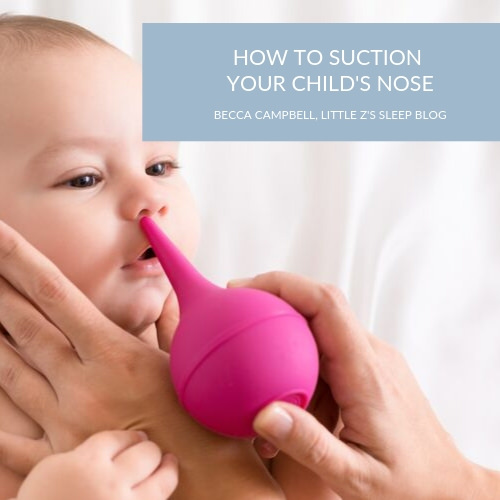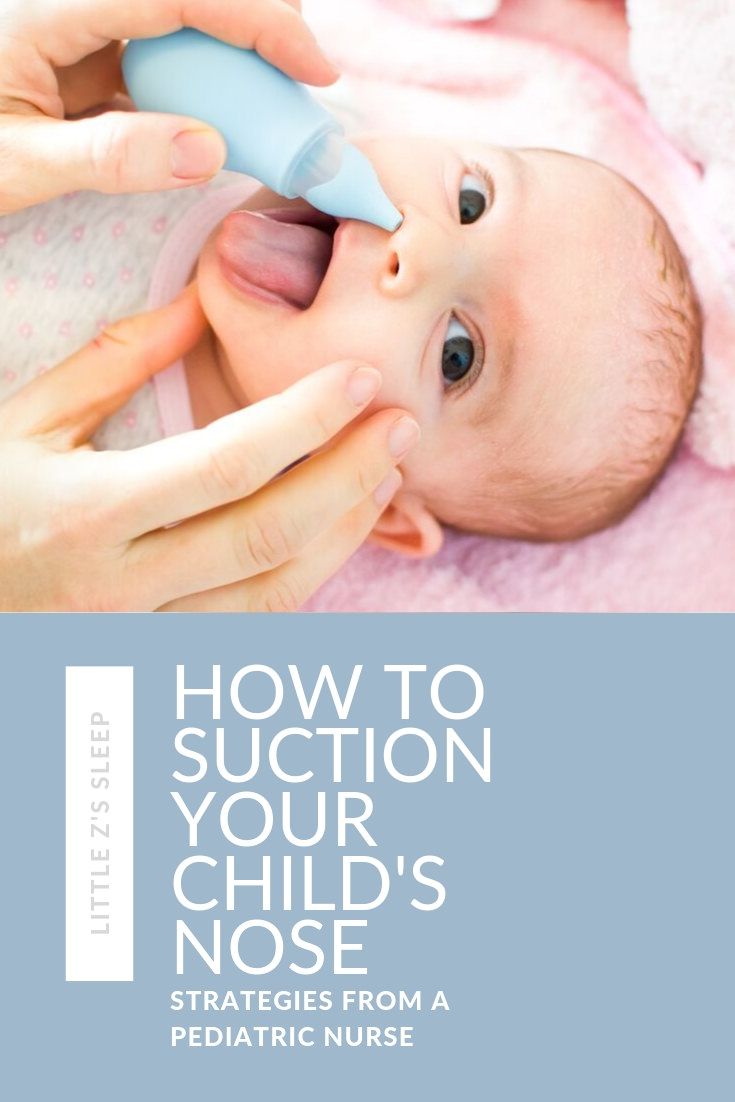
How To Suction Your Child’s Nose
Kate Morse, RN, BSN
Is a stuffy nose wreaking havoc in your child’s daily routine? For babies and children who have not yet mastered the art of blowing their nose, suctioning is a great way to help clear their nasal passageways. Follow along to learn how to use a bulb syringe or a nasal aspirator to suction your child’s nose so they can eat and sleep better!
Gather Your Supplies
Regardless of the device you use to suction your child’s nose, you will need the following items:
-
Nasal saline drops or spray- saline helps moisten and loosen the mucus before suctioning
-
Gentle face wipes – these wipes are made for sensitive skin and will prevent any further dryness or irritation to your child’s skin
-
Tissues
-
Swaddle – if you do not have an extra set of hands, you can swaddle your child with their arms in to keep them from reaching for the suction device
-
Warm water
-
Soap
Bulb Syringe
A bulb syringe is a rubber syringe that you likely received from the hospital once your baby was born. If you do not have one from the hospital, you can buy one at your local drugstore or pharmacy. The Little Z team recommends this one because of its larger size.
-
Wash your hands well before and after suctioning
-
Lay your child face-up on a flat surface
-
Have someone hold your child’s arms by their side, or wrap your baby in a swaddle with their arms inside
-
Using saline, spray once or place 1-2 drops inside one nostril
-
Prior to placing the bulb syringe inside your child’s nostril, use your thumb to press all of the air out of the syringe to create a vacuum
-
Gently place the tip of the syringe in your child’s nostril and slowly release thumb to suction out mucus
-
Remove the syringe and expel mucus into a tissue
-
Repeat the process on the other nostril
-
You may need to repeat suctioning a couple more times to clear all of the mucus
-
Using a gentle face wipe, clean the mucus from around the nose to prevent further skin irritation
How do I clean my bulb syringe?
Rinse the bulb syringe in warm water and soap after each use. It may be easiest to use a bowl, or plug the sink and fill with warm soapy water. Place the tip of the syringe in the soapy water and squeeze so the inside fills up, too. Swish the soapy water around the inside of the syringe before squeezing it out. Rinse thoroughly by repeating the steps several times. To dry, place the syringe in a glass with the tip facing down.
Nasal Aspirator
A nasal aspirator is a newer device used to suction children’s noses. These devices cost a little more, but are easier to use and are more effective. A nasal aspirator consists of a large nozzle that you place inside your child’s nostril, a long and thin tube, and a mouthpiece that goes in your mouth. In general, you suck on the mouthpiece to expel mucus from your child’s nose. A filter inside the tubing prevents mucus from passing through to the mouthpiece. Your nasal aspirator will come with its own instructions. Spray once or place 1-2 drops of nasal saline in your child’s nostril before suctioning to make mucus easier to expel. It is important to take these devices apart and clean with warm soapy water after each use. It is also important to change the filter according to your device’s directions.
Suctioning Safety
Do not suction your child’s nose after a feeding; this may cause your child to vomit. Do not suction your child’s nose more than 2-3 times per day and do not use nasal saline for more than 4 days in a row. This can dry the inside of your child’s nose and make matters worse.
What are some other ways I can help my child’s stuffy nose?
Humidified Air
Dry air can be very irritating to the nose, mouth and eyes. Humidified air is a great way to keep the nasal passages open and to help with nasal congestion. A humidifier can be placed in a child’s bedroom at night or during naps. Just be sure that the humidified air is not blowing directly on your child and be sure the cord is kept safely out of reach. Follow your humidifier’s instructions on how to keep it clean.
If you don’t have a humidifier, trying turning on a hot shower and let the bathroom fill with steam. Let your child sit in the bathroom for a few minutes to help with their stuffy nose.
How do I handle night wakings and runny noses?
If or when your child wakes in the night, and they struggled with a constant runny nose during the day- it’s okay to help them! But if you’ve worked hard to sleep train them, and they know how to sleep independently – we want them to keep that skill up! A runny nose or mild cold isn’t an excuse to totally derail our expectations. At night, wait a few minutes to see if they’ll resettle on their own. If not, go ahead and help them! Bring them a tissue (if they are older) or use one of the methods above to help. When offering help for a baby, enter the room, turn a low light on, pick them up, suction their nose, and return to the crib. Say goodnight and leave the room. When your baby knows they are in charge of sleep, they won’t be looking for you to help them back to sleep!
Here’s to a crisp, cool and HEALTHY end of 2019,
Kate Morse, RN, BSN
*Disclaimer: The content provided by the Little Z team is not intended, nor recommended, to replace medical advice, diagnosis or treatment. Please contact your healthcare provider for medical conditions and questions.*

Leave a Reply
FLASH SALE
ONE WEEK ONLY
Keep sleep a thing on vacation with the Little Z's Travel Guide!
Minor feedback: make the amazon links open in a new tab! That way I can go buy the product and hop right back to the article 🙂
Solved!!!